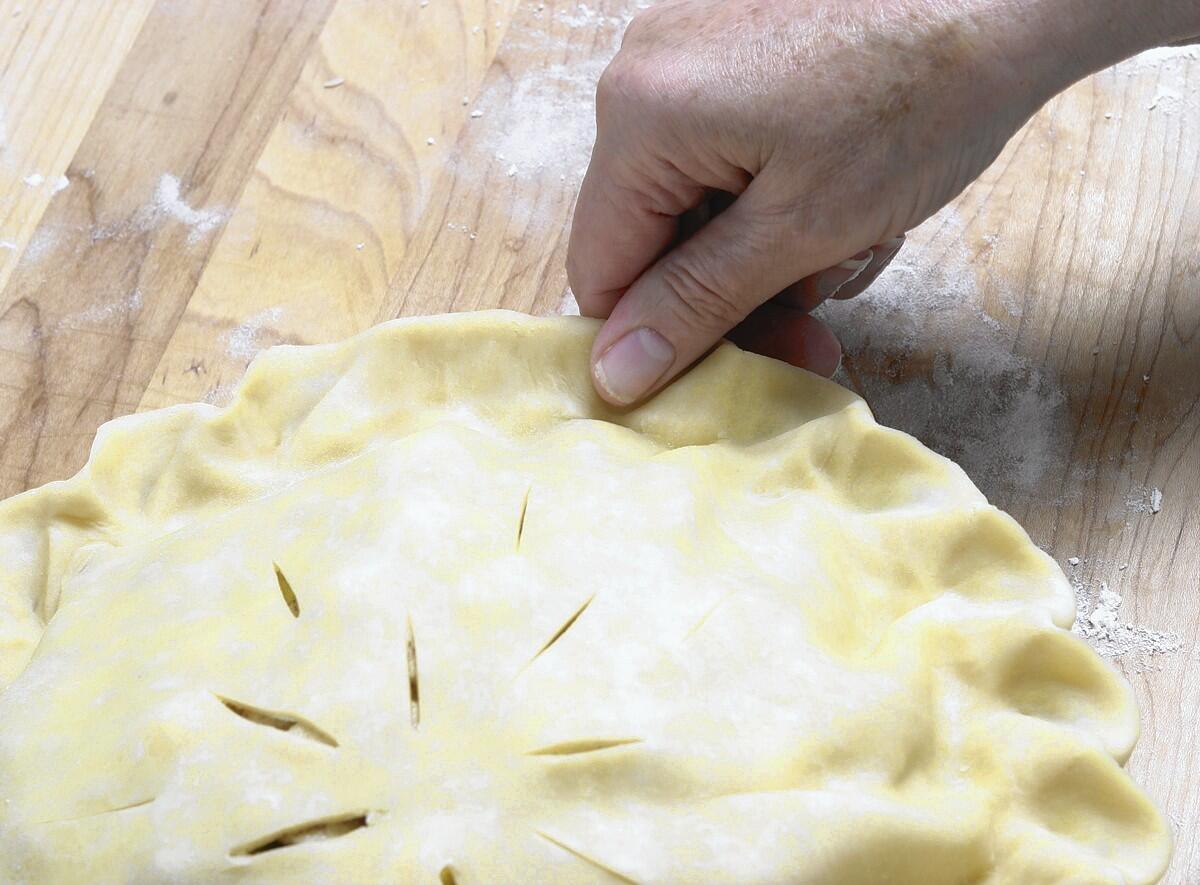Evan Kleiman reveals some sweet advice for baking the best pies

- Share via
You’re finally ready to make that first pie. You find a recipe with an accompanying picture of a perfect, gorgeous pie, and you plunge right in. You follow the recipe, yet somehow everything turns out wrong. The crust is like cardboard or sand. There is no flakiness, and it tastes terrible, like bland cooked flour. The filling just pours out of the sad crust — it’s like a pond in there. And so you decide, after one attempt, that you can’t make pie.
I understand. I’ve been there, and so has every pie maker. Why? Because pie is not a recipe. It’s a wisdom practice.
Don’t roll your eyes. I learned this the hard way, over a long haul of practice, tinkering and more practice — interspersed with hundreds of conversations about flour, butter, ice, vodka, vinegar, cornstarch and on and on. And watching. And listening. Because there is no substitute for watching how longtime pie makers bake a pie. And listening to them explain as they go what they do and why. Explanatory language is personal. Maybe we use the same exact proportions of ingredients, but the way we explain what we do is different.
In the Kitchen: Sign up for our weekly cooking newsletter
I saw the power of this when I co-taught a weeklong pie camp with Barbara Swell at the John C. Campbell Folk School in North Carolina. It turned out that my dough recipe and Barbara’s were nearly indistinguishable, despite the fact that we measured (weighed) our ingredients differently and described the process in different ways.
I watched the light bulbs go on for students while Barbara spoke. And other light bulbs for other students when I narrated my pie.
Like the pie dough itself, the learning of pie is a layering of ingredients — in this case, tips, stories and concrete measurements. There is the way an excellent baker smears the layers of butter and flour, or brings the dough together with a light touch after the icy water is added. And then there’s the rolling, the filling, the topping and crimping and baking. Pie has many parts, and each of them is fiddly.
This current impatience, this expectation of instant excellence, is an affliction of our particular time, as is the quickness to give up. In the past, there was more of an assumption that everyone needed a teacher or mentor, maybe a mother or grandmother, to demonstrate the process. Maybe you would first help measure and mix the dry ingredients. Then you’d be allowed to cut the butter into the flour. And little by little, over months or even years, all the little fiddly parts you learned by watching and listening came together. You became a pie maker, ready to pass on the wisdom yourself.
The only difference now is that our mentors may not even live in the same city as we do, let alone the same house. So watch videos. Take classes. Bake with friends. Read. Eventually the layers will build up and your hands will take over and the entire experience will be delicious. Not just the eating.
Kleiman ran Angeli Caffe in L.A. for 27 years. She’s the longtime host of KCRW’s “Good Food.”
[email protected]
MORE PIES:
Good Girl Dinette’s Diep Tran makes peace with pie
Break out of a crust rut with different flours for the dough
Recipe: Cute little Key lime pies from Fishing With Dynamite
Pastry chef Roxana Jullapat makes an easy-as-summer strawberry pie
More to Read
Eat your way across L.A.
Get our weekly Tasting Notes newsletter for reviews, news and more.
You may occasionally receive promotional content from the Los Angeles Times.










